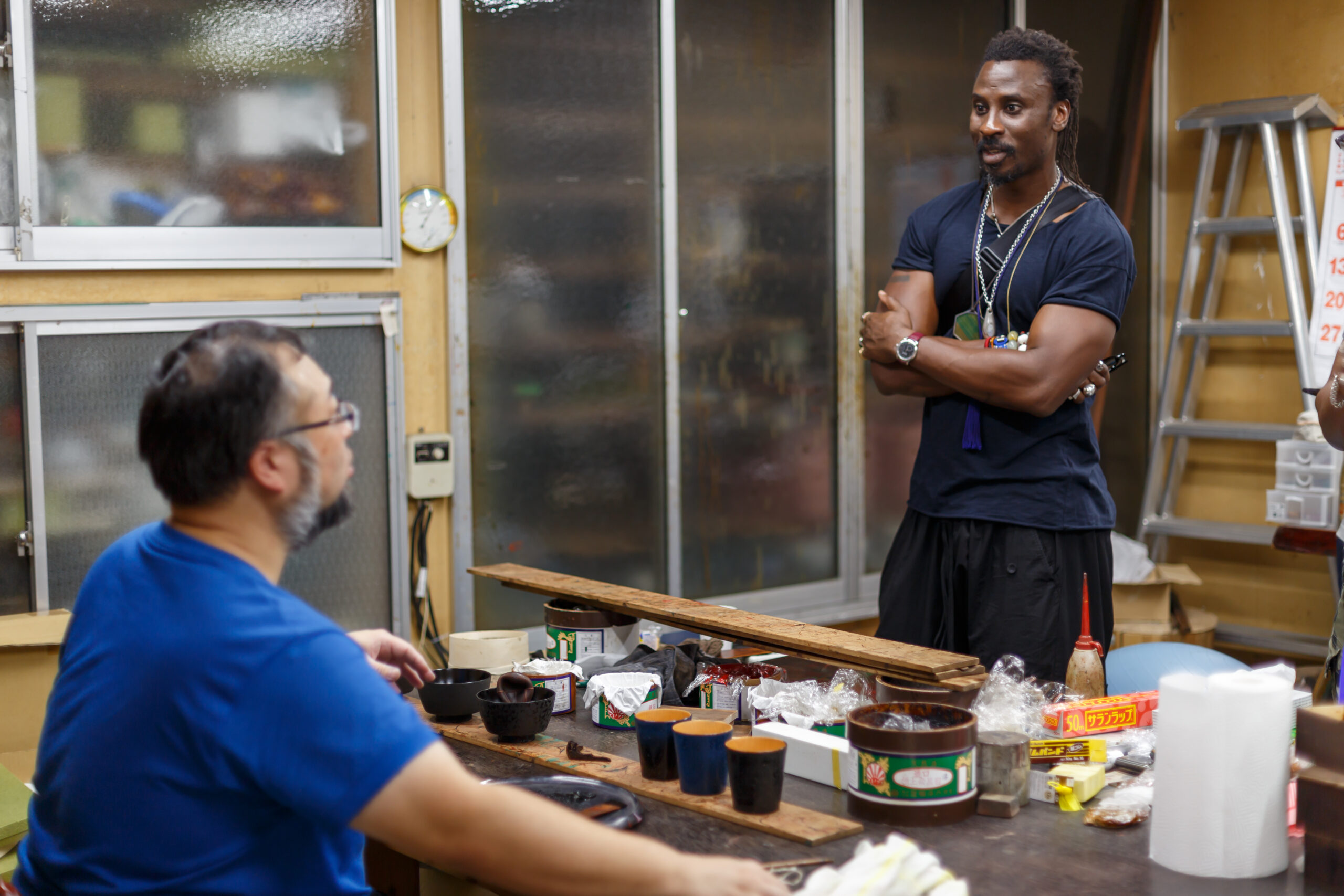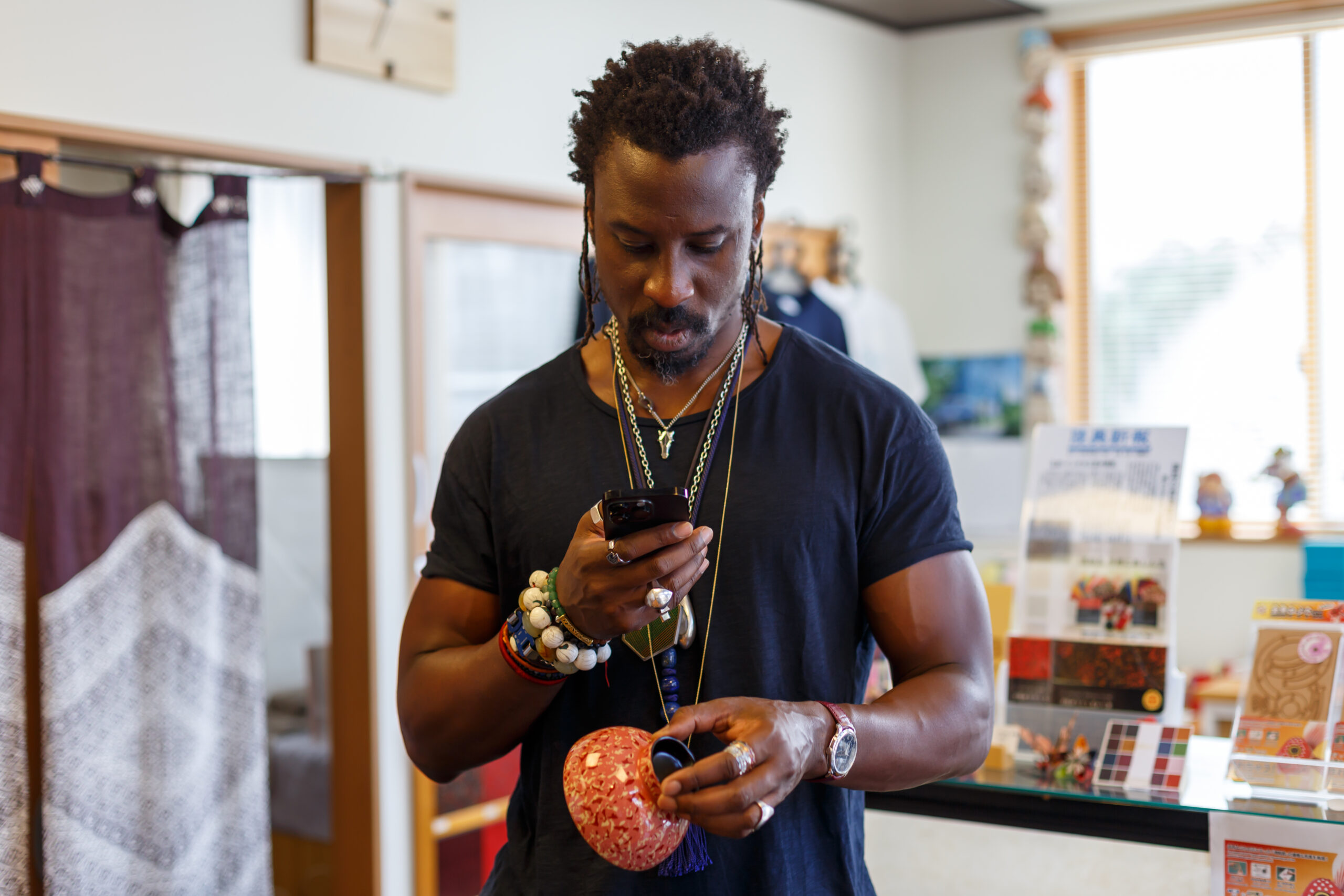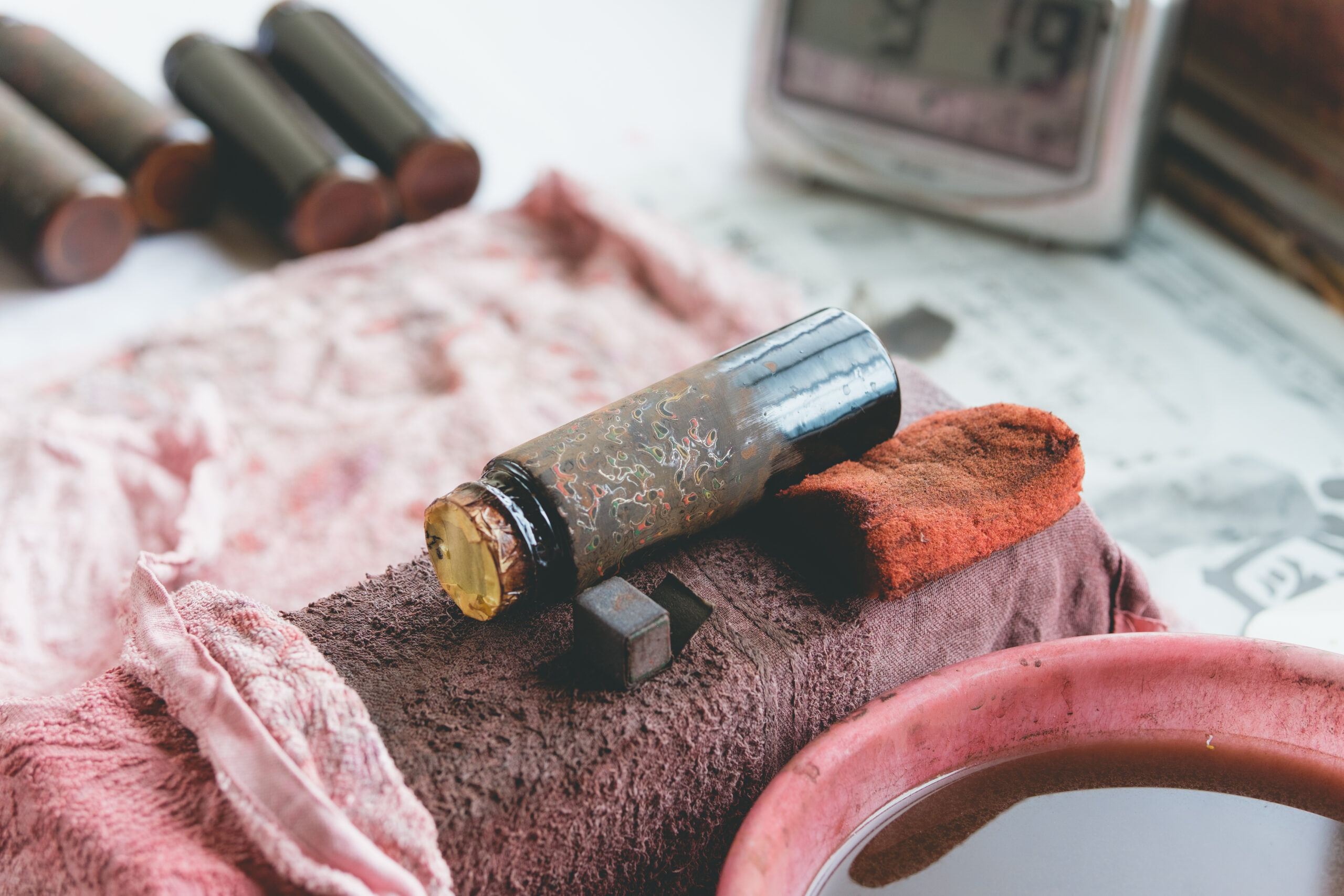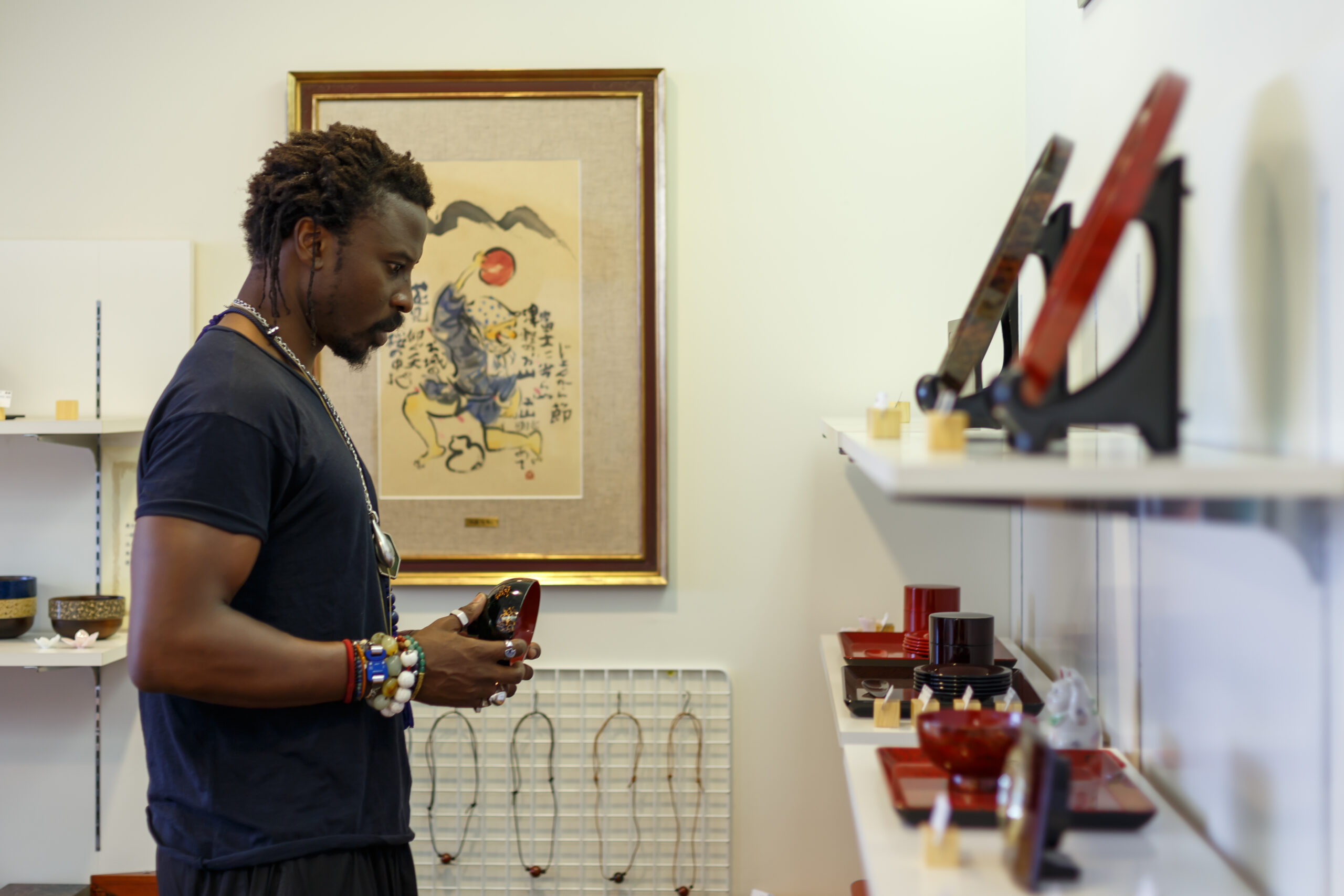- How does your interest in master craftsmanship intersect with your experience in various design realms, and how did this influence your approach to collaborating on the Tsugaru Nuri project?
Design is the work you do before creation. Having worked with master craftsmen, I approach design with the same dedication and spirit needed to create something special – I approached the Tsugaru Nuri collaboration project in the same way. I traveled to Aomori – you have to go where the craft originated from, sit with the craftsmen, observe their techniques, and ask questions. What I always try to do is to try to understand what they do from a technical standpoint, and then reinterpret it through my own lens to create something new.
- In what ways does the intricate lacquerware craft of Tsugaru Nuri align with your work?
What I find intriguing about Tsugaru Nuri, compared to other lacquer traditions, is its inherently organized process that produces a uniquely chaotic outcome that cannot be repeated exactly. This aligns with my philosophy and influences my work, ensuring that each creation is truly unique. Even when using a repeatable process, the results are never identical. We live in a chaotic yet organized system, and to navigate it, we must create within a framework that allows for controlled chaos. This is precisely what happens with Tsugaru Nuri.
- CouldCould you elaborate on how your approach to design played a role in your collaboration on a traditional craft like Tsugaru Nuri?
My approach to design is intuitive, unrushed, and in a sense ‘unorganized’. I think this played a role in the collaboration because I am sure that Hideki and Japanese craftsmen are accustomed to more planning and preparation. Because of my working style, it may have taken time until the moment hit me, where I was able to quickly draw my ideas and share them.
- During your collaboration on Tsugaru Nuri, what unexpected challenges or enlightenments arose, particularly in merging traditional craftsmanship with contemporary design perspectives?
There were no challenges – this was a completely flawless and intuitive collaboration. We spent time in Aomori to understand their craft, and then I let the idea develop in my mind. Once the concept was clear, I knew exactly what needed to be built. In Berlin, I spent time constructing the synthesizer ,which I sent over and it was integrated perfectly into the outer shape which was designed. When we came to Japan, everything worked as expected. The final product matched my vision exactly.
- How do you envision the fusion of your design principles with the artistry of Tsugaru Nuri influencing your future projects?
I have already collaborated with craftsmen, I do it all the time, it is my life. This project marks the beginning of a new series of work, and I envision continued collaboration with Japanese craftsmen in the future.
